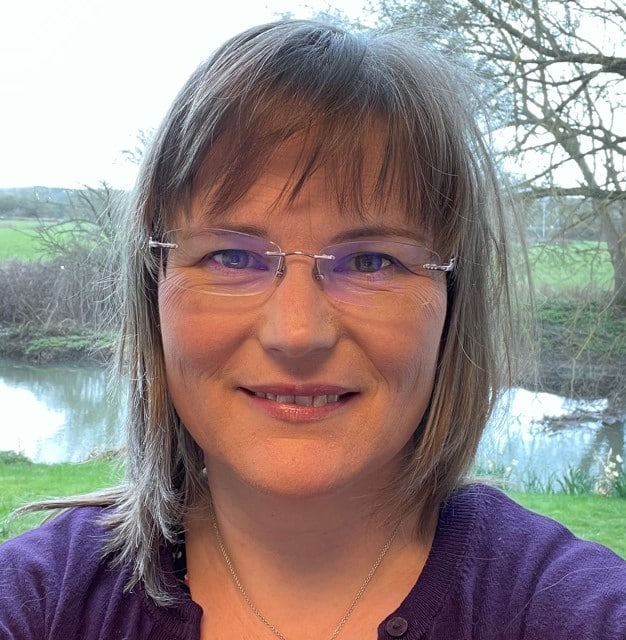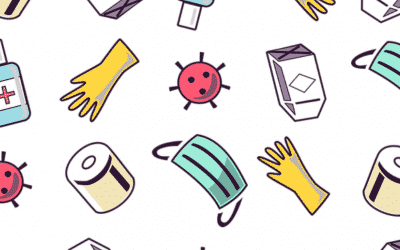Can you make a dengue fever forecast?
Wednesday 22nd Mar 2023, 12.30pm
More than half the world’s population is at risk from dengue fever, a viral infection that is spread via the bite of an infected mosquito. While some cases of the disease can be mild, others can be extremely dangerous and even fatal – particularly if someone has contracted the virus previously. When cases of dengue fever are high, those at risk can take some preventative measures, such as wearing clothing that covers as much skin as possible, using mosquito nets at night, and avoiding standing water. As such, some way of predicting high levels of the virus before they arrive would be invaluable. This is exactly what Dr Sarah Sparrow and her colleagues at the DART (Dengue Advanced Readiness Tools) project are hoping to achieve – using climate data to create a forecast, similar to a pollen forecast, for dengue fever.
Emily Elias: In Vietnam, an outbreak of dengue fever can be serious, that’s why a team of researchers in Oxford are trying to do something that hasn’t quite been done before. They’re trying to create a forecast system to warn people to take extra care when the mosquitoes’ spread of disease is at its highest.
On this episode of the Oxford Sparks Big Questions Podcast, we’re asking, “Can you make a dengue fever forecast?”
Hello, I’m Emily Elias and this is the show where we seek out the brightest minds at the University of Oxford and we ask them the big questions, and for this one we have found a researcher who is working with models from halfway around the world.
Sarah Sparrow: Hi, I’m Sarah Sparrow and I work at the Department of Engineering Science at the University of Oxford. My research focuses on climate change and weather impacts, and the work that we’re doing is part of the DART project, which is the Dengue Advance Readiness Tools, which is a project funded recently by the Wellcome Trust.
Emily: What exactly is dengue fever?
Sarah: So, dengue is a viral infection which is transmitted to humans by the bite of an infected mosquito. You tend to find it in the tropics and sub tropics and it’s most prevalent in cities and urban areas.
Infections generally cause, kind of, flu-like symptoms, but severe dengue can lead to, you know, much more severe illness or even death. Yes, so about half the world’s population is, currently lives in an area at risk of dengue transmission and with climate change and human migration and increased urbanisation, we’re expecting to see a lot more dengue cases and dengue exposure in the future.
Emily: So, what is the big idea? Explain it to me?
Sarah: So, in the UK we tend to have pollen forecasts and that warns the public of areas or times where you’re at increased risk, and this idea was to say, “Well, why can’t we apply something similar, but to dengue fever?” So, trying to notify the public to tell them to take preventative action, when there’s likely to be hotspots or increased risk of exposure, but also to inform public health services so that they can be better prepared should a major outbreak occur.
Emily: Why would this be such a gamechanger for how dengue is tackled?
Sarah: In Vietnam at the moment the vaccines they have got are very poorly effective for treating dengue, and so if we can actually inform people of when they’re actually at greater risk of exposure, then they can take these actions. And it can help with knowing what the risks are and they can make sure they don’t have any standing water around them, and they can put on mosquito repellent to make sure they’re, you know, minimise their chances of being bitten, which can help reduce.
So this is quite, for some countries in Asia and Latin America this is really a big problem for their health systems. We’re very fortunate on this project to be working with Sophie Yacoub from the Oxford Clinical Research unit in Vietnam and she leads the dengue research efforts there.
Sophie: I think there is a fair amount of anxiety, dengue has been present in countries like Vietnam and Southeast Asia for many years, but when there is a big outbreak people are worried, especially for people who are at higher risk of more severe disease like the elderly or the young or people with comorbidities.
From a hospital, I guess, point of view, for in a big outbreak, hospitals can be completely overwhelmed by patients with dengue which means it’s very hard to care for these vast numbers of patients. So actually, knowing in advance really makes a big difference to not only just preparing number of beds but other hospital resources. So, it can suddenly overwhelm healthcare facilities, and this is what we’re trying to protect.
Sarah: So, we’ve chosen to work on two different case studies cities. So, one is Ho Chi Minh City, and this has a two season monsoon climate and dengue’s really around, all year round there. So, I think people are aware that maybe particularly when there’s rainy weather they might need to start taking some preventative measures, but nothing more targeted that that.
The other case study city is Hanoi and that’s got a much more four season sub-tropical type climate, and dengue’s only recently emerging there in this particular region. And there you get much more seasonality in the dengue transmission, so when you’ve got cold winters then it’s halting the disease transmission a lot more and accelerating during warmer months.
So, as a member of the public that’s there, I don’t think you have much more information though, apart from, you’re living in an area where dengue is around and when historically you’ve just known that dengue might be more prevalent or not.
I guess we’re working in partnership with the European Centre for Medium-Range Weather Forecasts who are providing some of the weather forecast data that we’re using within the project and we are also working with the centres for disease control in Ho Chi Minh City and Hanoi.
Emily: So it’s not just about the patients though it’s also for the health systems, this could be a big deal for health systems if they’re able to predict when a big outbreak could happen.
Sarah: Yes, so if we can get relevant information to them early enough, then they can start putting in preparations for the number of hospital beds they might be needing and also understand which hospitals in the city or within the areas might require more assistance or more preparedness for a big outbreak that might be occurring.
Emily: Okay, so you in Oxford, obviously you’re working on a problem that is happening in Vietnam, how do you even start going about the process to make a forecast?
Sarah: Sure, well this is where we kind of, are quite fortunate in Oxford because we’ve got a wealth of expertise across different departments. So the idea is to bring these people together and that might be the epidemiologists, and the weather and climate forecast community, and engineers, and the data visualisation specialists, and they all if you like, understand very well their component parts but it’s about bringing these together in a usable fashion.
So it’s actually using models and building models to actually bring the expertise from each of these disciplines together into a forecasting tool. So, it’s about bringing together all the different data that might be in different formats and different resolutions. So, we have technical details in order to actually make the data work together.
But then it’s also bringing that modelling expertise and building the models to forecast how this behaviour might change and that might be linking from the weather through to the hydrological aspects, through to how the mosquito life cycles may begin. And then also how the disease will actually kind of evolve in the surrounding areas.
Emily: So, it’s a lot of different elements that are going into creating this one forecast.
Sarah: Yes, that’s right.
Emily: End goal here would it simply be like how we have with a pollen forecast, something easy for the public to be able to digest?
Sarah: Yes absolutely, so the key goal here is that really, we don’t want to just, produce something that is scientifically interesting, but, you know, perhaps nobody apart from scientists can interpret what it is that we’re showing. So that’s why we have on board in the project, visualisation experts that can help really display the information that we’re producing in a way that is most easily digested by each particular group.
So you might have some output that is targeted for the general public, and that might be something that is the very simple, high, medium, low risk in a particular area with some, also information on what preventative measures they might be able to take.
But also more detailed information for the resourcing of hospitals or for healthcare professionals about the sorts of information they need to know for the decisions that they’re going to make, and about displaying that in a way that they can most easily make their decisions.
Emily: Obviously climate change is a massive issue that everybody is dealing with. But when it comes to forecasting this type of modelling system, how do you take on a changing climate into this forecast?
Sarah: So once we have the system working and set up and we can forecast weeks to months ahead as to what we think might be happening with dengue, then we can change the inputs to the weather forecast model to perhaps consider different climate change scenarios, and this is sort of a process that is known as attribution studies.
And we can drive the model with different levels of CO2 or different kind of, the Paris Agreement compliant scenarios of two degrees of additional warming, and then run it through the model and see what effects this might have on the disease.
Emily: And once you figure this out in Vietnam, is this something that could then be applied to other places in the world that have similar struggles with dengue?
Sarah: Well, that’s certainly our aim. We’re sort of starting with Vietnam where we know that we’ve got good contacts and we’ve got the access to data through our contacts there, but we’re aiming to actually built the tool in a way that is very flexible so that we can switch off and on different components depending on what data’s available and in that way, we’re hoping that we can expand it into different dengue inflicted regions in the future.
Emily: I mean, this sounds like a massive project, how long do you anticipate something like this would take you to build?
Sarah: So, the project we’ve got funded is a three-year project here, we’re aiming to get prototypes working, you know, within the first couple of years of the project. The idea is that at the moment, because there is no real public facing information that is available, is to get something, if you like, our minimum viable product if you like. Something that is working in the system, and then we can go about adding on extra intricacies as to how this might work better and start adding different improvements on it.
But obviously we need to validate and make sure by looking at historical cases that our system has actually some forecasting skill while we’ve produced it as well.
Emily: So, what is keeping you up at night then?
Sarah: Yes so, it certainly is a challenge trying to make sure that all of these pieces fit together well, but I think the challenge is really about communication, and making sure that we’ve got good communication between our different scientific groups and how they’re working together and also good communication with the different stakeholders so that we can know how effective this might be and we can make changes as it goes.
I think it’s early days yet, so if you ask me again in a little while, sort of six months’ time, then I might be having more sleepless nights about how this works together.
Emily: This podcast was brought to you by Oxford Sparks from the University of Oxford, with music with John Lyons and special thanks from Sarah Sparrow. Tell us what you think about this podcast, we are on social media at Oxford Sparks, we also have a website Oxfordsparks.ox.ac.uk, and we are real people, get in touch, we’d love to hear from you.
I’m Emily Elias, bye for now.
Transcribed by UK Transcription.




